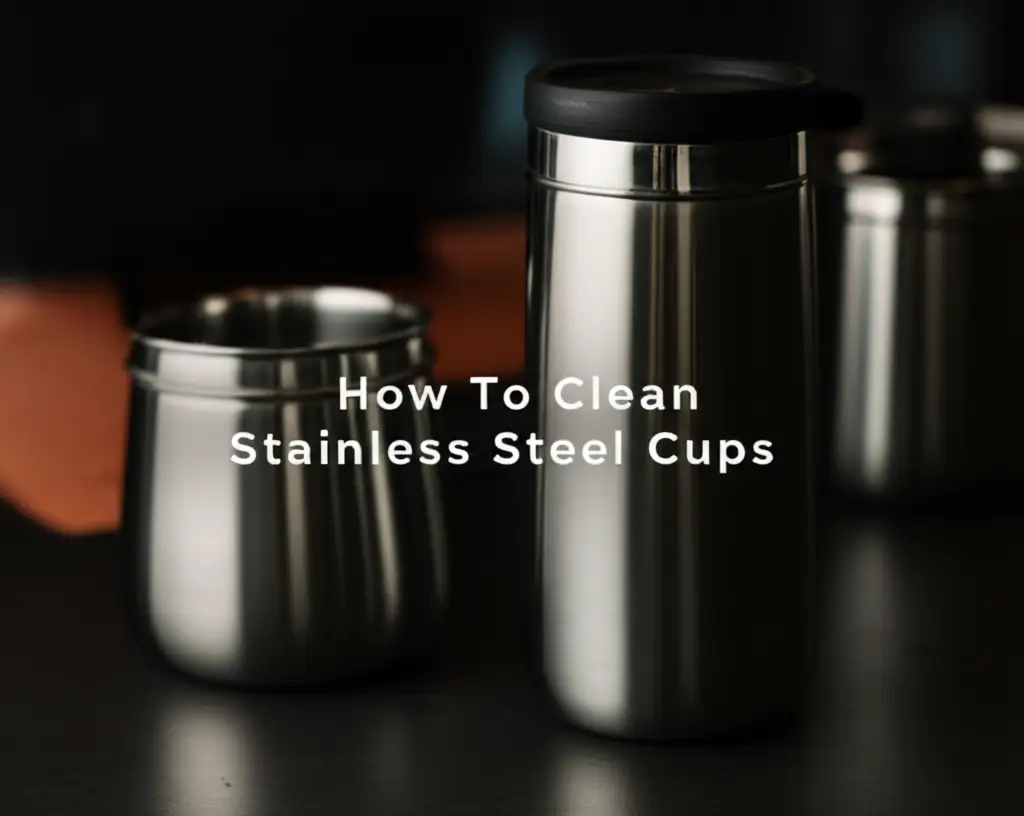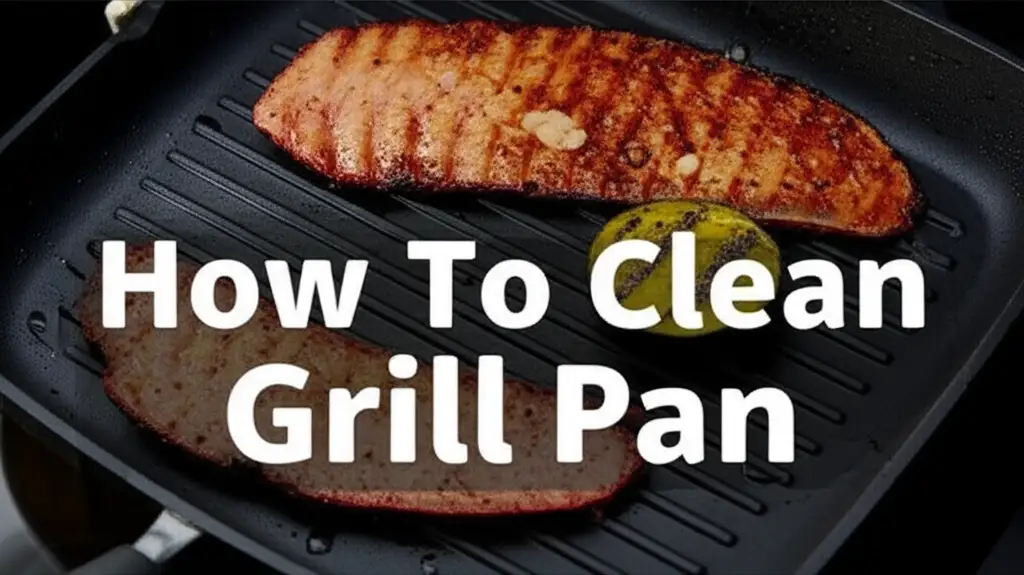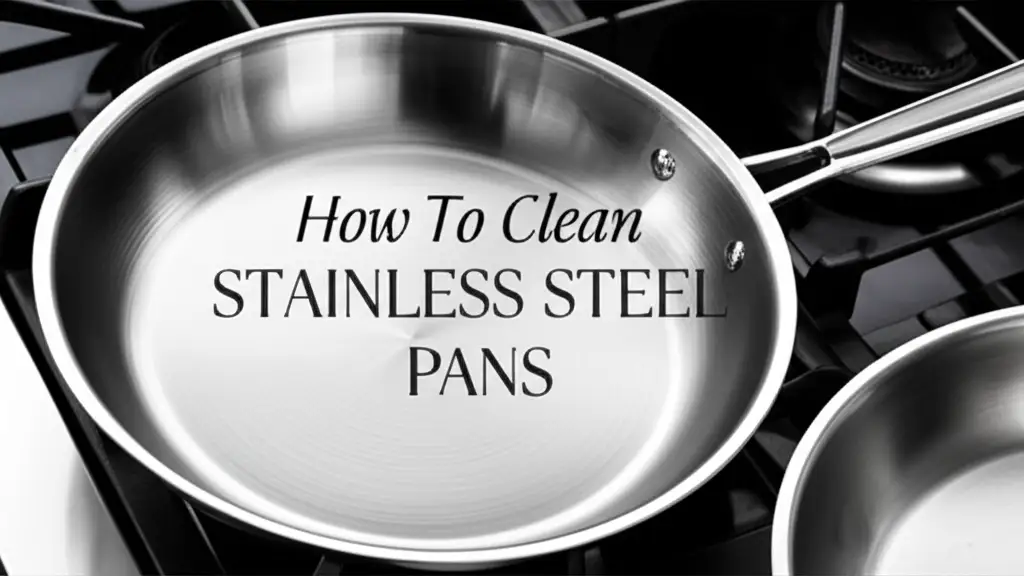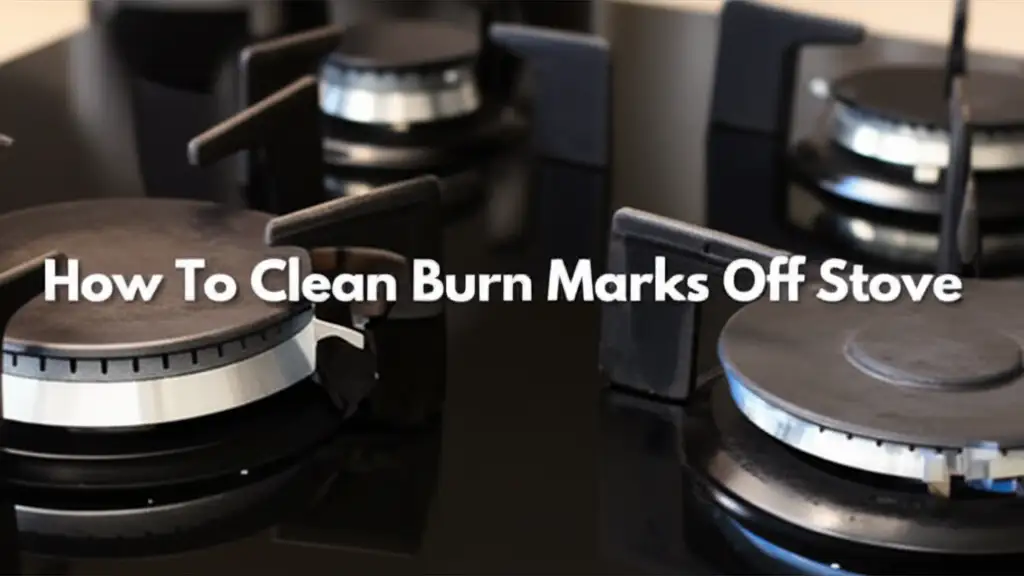· Kitchen Care · 18 min read
How To Clean Pasta Machine
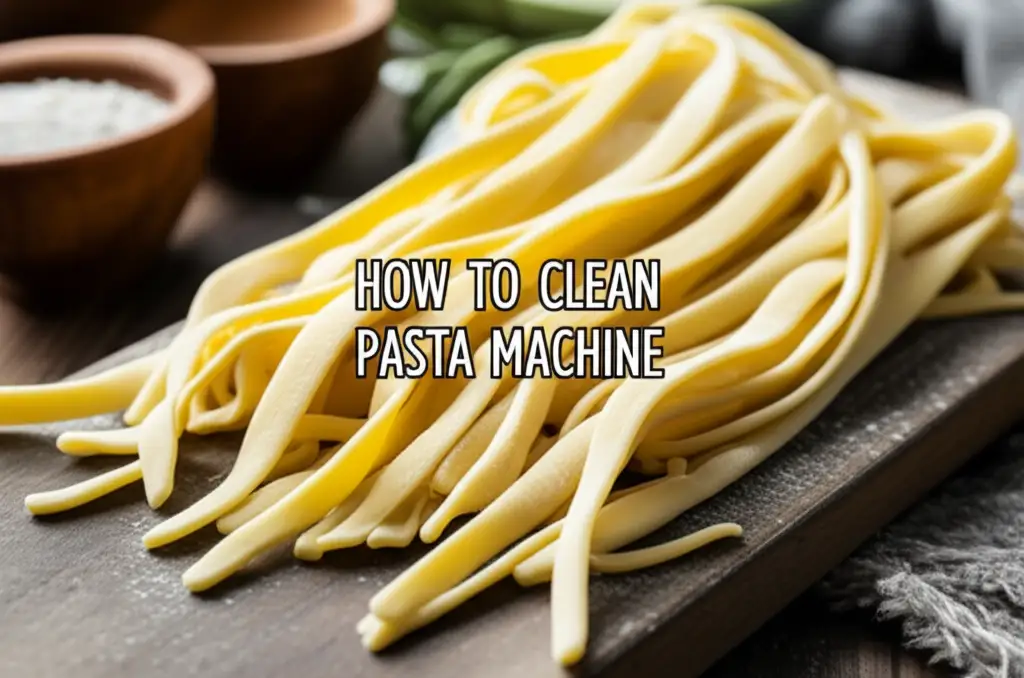
Mastering the Art: How to Clean Your Pasta Machine for Fresh Pasta Every Time
Making fresh pasta at home brings a lot of joy. The texture and taste are far superior to store-bought varieties. However, a common challenge many home cooks face is keeping their equipment in top shape. If you make pasta often, you know that dough and flour residue can build up. This buildup affects both your machine’s performance and the quality of your pasta. Knowing how to clean pasta machine properly is key to long-lasting success.
This guide will help you understand the importance of cleaning. We will explore the right tools you need for the job. Then, we will walk through simple, effective steps for both manual and electric pasta makers. You will also learn how to avoid common cleaning mistakes. By the end, you will feel confident cleaning your pasta machine. This keeps your appliance in perfect working order.
Takeaway
- Dry clean your pasta machine. Never use water or harsh detergents on the rollers.
- Allow dough to dry. This makes removal easier.
- Use brushes and toothpicks. These tools remove stuck flour and dough.
- Store in a dry place. Protect your machine from moisture and dust.
Clear, Concise Answer
To effectively clean a pasta machine, allow any dough residue to dry completely. Then, use a stiff brush and toothpicks to dislodge dry flour and dough from the rollers and cutting blades. Avoid using water or soap on the machine’s internal parts to prevent rust and damage.
Why Cleaning Your Pasta Machine Matters
Maintaining your pasta machine is crucial for several reasons. A dirty machine can impact your food’s safety. It can also reduce the lifespan of your valuable kitchen tool. You want your pasta to be delicious and safe to eat. A clean machine helps ensure this.
Leftover dough and flour can become breeding grounds for bacteria. This creates a hygiene risk. Old, hardened dough can also gum up the gears and rollers. This makes the machine harder to operate. Regular cleaning keeps these problems from happening. It ensures your homemade pasta is always top-notch.
Health and Hygiene Benefits
Food safety always comes first in the kitchen. A pasta machine comes into direct contact with food ingredients. Flour and dough bits can get stuck in small crevices. Over time, these residues can spoil. They can even grow mold if left uncleaned. Using a dirty machine risks cross-contamination. It also introduces unwanted flavors into your fresh pasta. I always make sure to clean my machine after each use. This keeps my kitchen safe and my pasta pure.
Preserving Machine Performance
Pasta machines rely on precise mechanisms. Rollers and cutters need to move smoothly. Dried dough and flour create friction. This friction can strain the machine’s motor (for electric models) or gears (for manual ones). This makes it harder to crank or feed dough. It also produces uneven pasta sheets. A clean machine works efficiently. It helps you achieve consistent pasta thickness and perfect cuts. This consistency is essential for quality pasta.
Extending Appliance Lifespan
Kitchen appliances are an investment. Proper care extends their life. Pasta machines are no exception. Neglecting cleaning leads to wear and tear. Rust can form on metal parts if moisture is present. Internal components can seize up from dried gunk. Regular maintenance prevents these issues. It saves you money in the long run. Cleaning your machine ensures it will serve you for many years. It lets you enjoy countless batches of fresh pasta.
Essential Tools for Effective Pasta Machine Cleaning
You do not need many tools to clean your pasta machine. The right set of simple items makes the job much easier. These tools help you reach tight spaces. They also remove stubborn residue without damaging the machine. I keep these items handy near my pasta maker.
Gathering your tools before you start saves time. It also ensures a thorough cleaning process. Remember, water and harsh chemicals are generally off-limits for most pasta machine parts. So, focus on dry cleaning methods and tools. These tools are designed to gently dislodge dried food particles. They prepare your machine for its next use.
Cleaning Tool Checklist
- Stiff-bristled brush: This is your primary tool. It helps sweep away flour and small dough bits. A pastry brush or a dedicated cleaning brush works well. I often use a small paintbrush for this.
- Toothpicks or wooden skewers: These are perfect for getting into narrow slots and grooves. They dislodge stubborn dried dough.
- Soft cloths or paper towels: Use these for wiping down the exterior. They also help to absorb any excess oil after cleaning.
- Compressed air (optional): A can of compressed air can blow out flour dust from hard-to-reach areas. This is especially useful for electric models.
- Damp cloth (for exterior only): Use it sparingly for the outer casing. Ensure it does not touch the internal rollers.
- Mineral oil (food-grade, optional): A tiny amount can be applied to the gears. This helps maintain smooth operation.
These simple tools are effective. They help you keep your pasta machine in excellent condition. Having them ready ensures a quick and efficient clean-up.
Step-by-Step Guide: Cleaning Manual Pasta Machines
Manual pasta machines are durable and simple. Cleaning them properly ensures they continue to work well. The key is to avoid water on the internal parts. Water can cause rust, which damages the machine. My own manual pasta maker has lasted years with this care.
Always start by removing any large pieces of dough. Let small bits dry before attempting to clean them. This makes removal much easier. A systematic approach helps you clean every part effectively. Follow these steps for a sparkling clean manual pasta machine.
1. Allow Dough to Dry
After making pasta, some dough will always stick. Do not try to wipe it off immediately. Fresh dough is sticky and will smear. Let your machine sit for at least 30-60 minutes. The residual dough will harden and become brittle. This makes it easier to flake off. I often leave mine out for a few hours. This ensures everything is completely dry.
2. Disassemble Removable Parts
Most manual pasta machines have removable cutting attachments. These include fettuccine or spaghetti cutters. Gently remove these from the main body. Refer to your machine’s manual if you are unsure how. Removing these parts allows better access to the main rollers and the cutters themselves. Some parts might just slide off easily.
3. Initial Dry Cleaning
Use your stiff-bristled brush. Brush away all visible flour and dried dough from the main body and rollers. Pay attention to the sides and underside. Also, brush the removable cutting attachments. Get as much loose debris off as possible. This prevents it from getting pushed deeper into the machine later.
4. Deep Cleaning Rollers and Cutters
This is the most important step. For the main rollers, use your brush to sweep inside. If dough is stuck, gently pick it out with a toothpick or a wooden skewer. For the cutting attachments, carefully poke the toothpicks into the slots. This dislodges dried pasta strands. Be gentle to avoid scratching the metal. I find a small, soft toothbrush also works well for this.
5. Wipe Down Exterior
Use a soft, dry cloth or paper towel. Wipe down the entire exterior of the machine. This removes any dust or flour on the outside. If there are stubborn spots, dampen the cloth very slightly. Ensure no water drips into the internal mechanisms. Dry the exterior immediately after wiping.
6. Reassemble and Store
Once all parts are clean and completely dry, reassemble your machine. Ensure all parts click back into place correctly. Store the machine in a dry, dust-free place. A kitchen cabinet or a dedicated drawer is ideal. You can cover it with a cloth. This protects it from dust between uses.
Cleaning Electric Pasta Makers: Specific Considerations
Electric pasta makers offer convenience, but they require careful cleaning. Their internal electrical components mean you must be extra cautious with moisture. Never submerge an electric pasta maker in water. Always unplug the machine before you begin any cleaning. I treat my electric pasta maker like any other delicate kitchen appliance. For example, cleaning an espresso machine also requires care around electrical parts. You can learn more about general appliance care, for instance, how to clean a Breville espresso machine.
The process for electric models shares similarities with manual ones. However, specific steps are necessary to protect the motor and wiring. Focus on cleaning removable parts thoroughly. Address the main unit with dry methods only.
1. Unplug the Machine
This is the first and most critical step. Always ensure your electric pasta maker is completely unplugged from the power outlet. This prevents any accidental activation. It also eliminates the risk of electric shock. Safety comes before everything else.
2. Disassemble Removable Parts
Most electric pasta makers have detachable parts. This includes the mixing chamber, kneading paddle, and various pasta dies. Carefully remove all these parts according to your machine’s manual. These are typically the only components that can be washed with water.
3. Clean Removable Parts
Wash the removable plastic and metal parts with warm, soapy water. Use a soft sponge or brush to remove dough residue. Pay attention to the pasta dies; small holes can trap dough. You can use a small brush (like a bottle brush) to clean the dies effectively. Rinse them thoroughly under running water. Ensure all soap residue is gone.
4. Dry Removable Parts Thoroughly
This step is vital. Let all washed parts air dry completely on a drying rack. You can also dry them with a clean towel. Ensure no moisture remains, especially in the small holes of the dies. Any remaining water can cause rust on metal components. It can also cause mold if stored damp.
5. Clean the Main Unit (Dry Method Only)
The main unit, which contains the motor and electrical components, must stay dry. Use a stiff-bristled brush to remove any dried flour or dough from the exterior and the opening where the dough extrudes. For stubborn bits in crevices, use a toothpick or a small, non-abrasive tool. A can of compressed air can also help blow out flour dust from hard-to-reach areas inside the main unit. This is similar to how one might clean a specialized machine like a cotton candy machine, where water must be avoided on electrical parts.
6. Wipe Down Exterior
Use a slightly damp cloth to wipe the exterior surface of the main unit. This removes fingerprints and smudges. Immediately follow with a dry cloth to ensure no moisture lingers. Never spray cleaning solutions directly onto the unit. Spray them onto the cloth first.
7. Reassemble and Store
Once all parts are completely dry, carefully reassemble your electric pasta maker. Ensure all components fit snugly. Store the machine in a clean, dry place. Protect it from dust and potential moisture. Proper storage helps maintain its condition for future use.
Tackle Tough Spots: Dealing with Stuck Dough and Residue
Sometimes, dough gets really stuck inside the machine. This can happen if the dough was too wet or if the machine sat for too long before cleaning. Do not panic. There are effective ways to remove even the most stubborn residue. Patience is key when dealing with these tough spots. I have found that rushing this process can cause more problems than it solves.
The most important rule remains: avoid water on the rollers or cutters. Water turns dry dough into sticky goo. This makes the problem worse. Focus on mechanical removal methods. These methods carefully dislodge the dried dough.
1. Let the Dough Dry Completely
This is the golden rule for stuck dough. If you have wet, sticky dough stuck in your machine, stop trying to clean it. Put the machine aside for several hours, or even overnight. As the dough dries, it shrinks and hardens. It becomes brittle and easier to chip away. This method is the most effective starting point.
2. Use a Stiff Brush and Toothpicks
Once the dough is dry, use a stiff-bristled brush. Vigorously brush over the areas with stuck dough. Often, dry dough will simply flake off. For dough stuck inside the roller gaps or cutter slots, use a toothpick or a wooden skewer. Carefully poke and scrape the dried dough out. Work gently to avoid scratching the metal parts. I sometimes use an old, clean toothbrush for this too. Its small bristles can get into tight spaces.
3. Gentle Scraping (Use Caution)
For very stubborn, hardened pieces, you can try gentle scraping. Use a plastic scraper or the back of a plastic knife. Never use metal tools like screwdrivers or metal knives. These can scratch and damage the machine’s surfaces. Scratches can create rough spots where future dough might stick even more easily. Apply light pressure. Try to lift the edge of the dried dough.
4. Run “Scrap” Dough Through (Manual Machines)
This trick can work for minor residue on rollers. Make a very stiff, non-sticky dough. You can use extra flour to make it extra dry. Feed this stiff dough through the rollers multiple times. The stiff dough will act like an abrasive. It can pick up smaller bits of dried dough and flour. Discard this “scrap” dough immediately. This method is mainly for manual machines.
5. Compressed Air for Fine Dust
After removing larger pieces, fine flour dust can remain. A can of compressed air can blow this dust out of hard-to-reach areas. Point the nozzle and give short bursts. This clears out lingering particles. Make sure to do this in a well-ventilated area. This helps keep your kitchen clean.
Post-Cleaning Care and Storage Tips
Cleaning your pasta machine is only half the battle. Proper post-cleaning care and storage are equally important. They prevent rust, dust buildup, and other damage. These steps ensure your machine is ready for its next use. It also helps to extend its overall life. I always make sure to follow these steps. This keeps my pasta maker in top condition.
A well-maintained machine will produce better pasta. It will also last for many years. Neglecting these final steps can undo all your cleaning efforts. Think of it as putting your machine to bed. You want it clean, dry, and protected.
1. Ensure Complete Dryness
This is the most critical step after cleaning. Even if you only dry-cleaned, ensure there is no residual moisture. If you washed any removable parts (for electric machines), they must be bone dry. Moisture is the enemy of metal parts. It leads to rust. Rust ruins rollers and cutters. Allow all components to air dry for several hours. You can even leave them out overnight. I sometimes wipe down the metal parts with a soft cloth. This ensures no hidden moisture remains.
2. Light Lubrication (Optional for Manual Gears)
Some manual pasta machines benefit from a tiny amount of food-grade mineral oil on their gears. This helps maintain smooth operation. Apply only a minuscule drop. Rub it into the gears with a toothpick or cotton swab. Be careful not to get any oil on the rollers or cutters. This could transfer to your pasta. This step is not usually needed for electric machines.
3. Protect from Dust and Moisture
Once dry, store your pasta machine in a clean, dry place. A kitchen cabinet or pantry shelf is ideal. Avoid storing it in humid areas like near a sink or dishwasher. Dust can also settle on the machine. This can get into the mechanisms. Use a clean cloth cover or the original box to protect it. This keeps dust out. It also prevents accidental scratches.
4. Store Attachments Together
If your machine has removable cutting attachments, store them with the main unit. This prevents them from getting lost. It also keeps them protected. You can put them in a small plastic bag or wrap them in a clean cloth. This keeps them dust-free.
5. Regular Maintenance Checks
Even if you clean it after every use, perform a quick check before using it again. Look for any dust, debris, or signs of rust. Spin the rollers by hand. Check if they move smoothly. This quick check helps catch minor issues before they become big problems. It ensures your machine is always ready for pasta making.
Common Mistakes to Avoid When Cleaning Your Pasta Machine
Cleaning a pasta machine seems straightforward. However, common mistakes can cause significant damage. These errors can shorten your machine’s life. They can also affect the quality of your pasta. I have learned these lessons over time. Avoiding these pitfalls saves you frustration and money.
Knowing what not to do is just as important as knowing what to do. Many of these mistakes involve moisture. Remember, pasta machines are designed to handle dry flour and dough. They are not designed for wet cleaning.
1. Using Water or Dish Soap on Rollers/Cutters
This is the biggest mistake you can make. The internal mechanisms (rollers, cutters, gears) are often made of steel or chrome-plated metal. Water causes rust. Dish soap leaves residue. Rust will ruin the machine. It makes the rollers rough and unusable. It also contaminates your pasta. Always stick to dry cleaning for these parts. For instance, cleaning a fog machine also often requires avoiding water on delicate internal parts.
2. Not Allowing Dough to Dry
Trying to clean wet, sticky dough is futile. It just smears. It also pushes dough deeper into the crevices. This makes it harder to remove. Always let dough remnants dry and harden. This transforms them into brittle, easy-to-remove flakes. Patience is a virtue here.
3. Using Abrasive Tools or Cleaners
Never use steel wool, abrasive scrubbers, or harsh chemical cleaners. These can scratch the machine’s surfaces. Scratches create rough spots where dough can stick. They also strip away protective coatings. This exposes the metal to rust. Use only soft brushes, toothpicks, and gentle cloths.
4. Neglecting Regular Cleaning
Leaving dough and flour in the machine after use is a recipe for disaster. The residue hardens over time. It becomes much more difficult to remove. It also invites pests or mold. Clean your machine after every single use. Even a quick brush-off helps immensely.
5. Storing in a Humid Environment
Moisture in the air can cause rust, even if you dry-cleaned the machine. Avoid storing your pasta maker in damp basements, garages, or directly next to sources of steam (like kettles). A dry, enclosed cabinet is the best place.
6. Disassembling Too Much (or Too Little)
Some machines are designed for limited disassembly. Trying to take apart too many components can damage the machine. It can also make reassembly difficult. Refer to your machine’s manual. Only disassemble parts meant for removal. Conversely, not removing detachable parts when they should be cleaned makes the cleaning less effective.
7. Forgetting to Clean the Gears
The gears, especially on manual machines, can accumulate flour dust. This can make them stiff. Use a small brush to clean around the gears. A tiny bit of food-grade mineral oil can be applied to the gears if they feel sticky. This keeps them turning smoothly.
FAQ Section
Can I wash my pasta machine with water?
No, you should not wash the main body, rollers, or cutters of your pasta machine with water. Most models have metal parts that will rust if exposed to water or soap. Only removable plastic parts (common in electric pasta makers like mixing chambers and dies) should be washed with water and soap.
How often should I clean my pasta machine?
You should clean your pasta machine after every single use. This prevents dough and flour residue from hardening and building up. Regular light cleaning is much easier than deep cleaning a neglected, gunked-up machine. A quick brush and wipe will suffice for most uses.
What if dough gets stuck inside my pasta machine?
If dough gets stuck, allow it to dry completely. Once dry, it will become brittle and easier to remove. Use a stiff-bristled brush, toothpicks, or wooden skewers to gently dislodge the dried dough. Never try to force wet dough out.
How do I lubricate my pasta machine?
Most modern pasta machines do not require lubrication. If your manual machine’s gears feel stiff, you can apply a tiny drop of food-grade mineral oil directly to the gears with a cotton swab or toothpick. Be careful not to get oil on the rollers, as it will transfer to your pasta.
Can I put my pasta machine in the dishwasher?
Absolutely not. Placing a pasta machine (especially the main unit, rollers, or cutters) in a dishwasher will cause severe damage, including rust and corrosion. The high heat and harsh detergents will ruin the finish and functionality of the machine.
Are there special cleaning solutions for pasta machines?
No special cleaning solutions are needed or recommended. In fact, most solutions can harm the machine. The best cleaning method for pasta machines is dry cleaning with brushes and picks. For the exterior, a slightly damp cloth followed by a dry cloth is sufficient.
Conclusion
Cleaning your pasta machine is a simple but vital task. It ensures delicious, hygienic pasta every time you cook. By following these steps, you keep your machine in top condition. You also extend its lifespan. Remember to always dry clean the internal parts. Allow dough to dry before you attempt to remove it. Use simple tools like brushes and toothpicks. Avoid water and harsh chemicals on the metal rollers.
A little care goes a long way. Your efforts in how to clean pasta machine will pay off. They will result in countless enjoyable meals. So, embrace the art of pasta making. Keep your equipment sparkling clean. This lets you create perfect homemade pasta for years to come. Start cleaning your machine today for better pasta tomorrow.
- pasta machine cleaning
- homemade pasta care
- appliance maintenance

